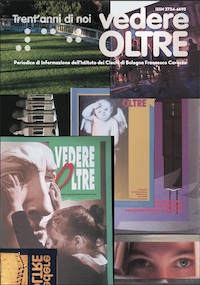Armando Gagliani, born in Molinella in 1890, moved to Bologna at the age of 20 and earned a diploma in restoration from the Academy of Fine Arts. A Socialist until the split in 1921, he joined the Communist Party in 1936. A fervent antifascist, his laboratory at via San Vitale 118 was a headquarters for partisan operations, an arms magazine, and a site for clandestine meetings. Gagliano was in charge of circulating the press and propaganda, as well as managing links between political and military sectors. After the Liberation, the National Liberation Committee of the Province of Bologna assigned him, along with Evaristo Diamanti (Italian Communist Party) and Luigi Lanzi (Italian Socialist Party) the task of re-forming a democratic labor movement and creating a united organization of Bolognese artisans. On 14 June 1945, the provisional Secretariat of the new democratic association of artisans (consisting of Gagliani, Lanzi, and Amleto Rocca (Christian Democratic Party) was officially installed. Gagliano was elected its provincial chairman, a position he held until 1961, when the Provincial Association became the National Artisan Confederation (CNA), of which he remained honorary chairman until 1974, the year of his death.

Elected city councilor on the lists of the Communist Party in the administrative elections for the City of Bologna held on 24 March 1946, he was put in charge of the Food Department in Mayor Giuseppe Dozza’s first administration after the Liberation, and was re-elected councilor in subsequent terms until November 1960. He was appointed consulting auditor of the City and of the municipally owned companies for gas, electric streetcars, and fruit and vegetable market from 1945 to 1959. He was one of the most enthusiastic supporters of the construction of the Bologna Exhibition Center, where artisans form a substantial percentage of the founding partners, representing the value of the sector’s work in the economy of the City and the surrounding area. In 1966, he was conferred the gold medal to celebrate the 20th anniversary of his election as councilor in the first administrative elections after the Liberation, held on 24 March 1946. He died in Bologna on 18 February 1974. A few days later, he was commemorated at the City Council as “a luminous figure of democracy, a fighter for freedom, as well as one of the most industrious and diligent authors of its reconstruction, both physical – after the ruins of war – and moral – after the cancellation of every form of civilized life imposed by fascism.” A long funeral procession, led by the City banner, crossed the streets of the historical center. On 20 February 2004, the traffic circle in his name was inaugurated in the Roveri zone, the core of Bolognese craft. For the occasion, the CNA donated to the city an imposing sculpture created by artists Nicola Zamboni and Sara Bolzani, entitled “"Artigiani e Cna, valore d'insieme," depicting ten artisanal crafts.





.png)